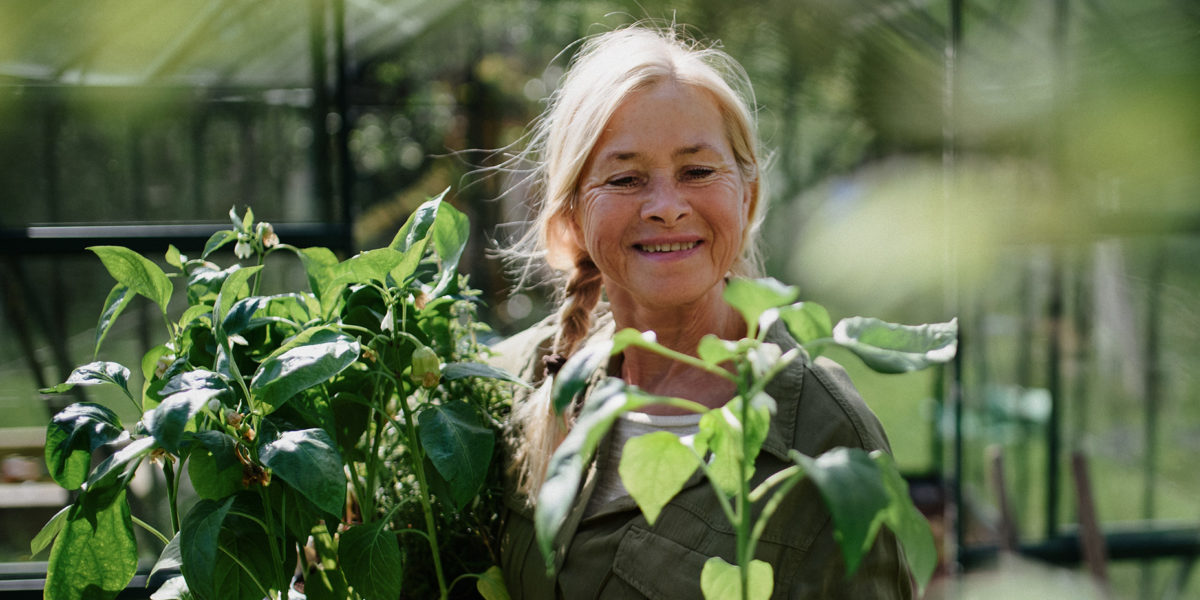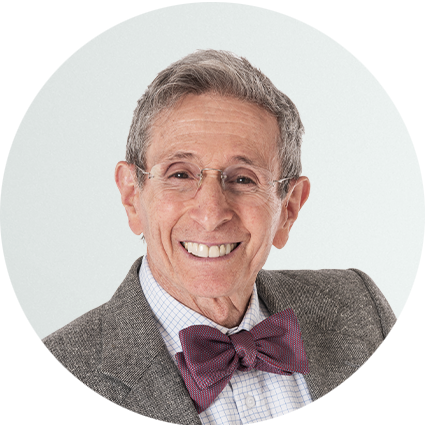Types of Osteoporosis
Types of Osteoporosis | Primary Osteoporosis Types | Causes of Secondary Osteoporosis | Key Takeaways
You hear people say it all the time — 50 is the new 40. And to a certain degree, it’s true. After all, you’ve probably noticed that most 50-year-olds aren’t as “old” as they used to be. On the contrary, they’re fitter, healthier, and younger-looking than a generation ago.
But on the inside, 50 is still 50. And that’s especially true when it comes to your bone health.
Here are some sobering statistics: Research shows that one in every two Americans over 50 has low bone density. And every year, 1.5 million of them suffer from a bone fracture. In fact, this year, 180,000 people can expect to get placed in a nursing home thanks to an osteoporotic fracture.1
But don’t worry. You can protect yourself from bone loss. And it starts with understanding the different types of osteoporosis and what causes them.
The Types of Osteoporosis
Doctors separate osteoporosis into two main classifications. Primary osteoporosis, where the bone loss is a result of getting older, and secondary osteoporosis, where bone loss is caused by various clinical and lifestyle factors.
Primary Osteoporosis
Primary osteoporosis is bone loss that’s caused by aging. But that doesn’t mean it’s confined to little old ladies with stooped shoulders. The truth is that by age 40, you start to lose around 1% of your bone density each year. This means your bones gradually become weaker or “osteoporotic.” And if your bone density gets too low, you may develop osteoporosis. Doctors separate primary osteoporosis into two types: Type I and Type II.
Primary Osteoporosis Type I
This is where bone loss is a consequence of estrogen deficiency. That’s why it’s sometimes called postmenopausal osteoporosis.
When estrogen is lost from a woman’s body during menopause, it triggers an inflammatory response.2 As a result, your osteoclasts (the cells that remove old bone) begin to work at an accelerated rate. This means you start losing old bone faster than your osteoblasts (the cells that build new bone) can replace it. The result? Your bones get weaker, thinner, and more vulnerable to fracture. Type I osteoporosis can also be caused by a lack of testosterone, although this is less common.1
Primary Osteoporosis Type II
This is also known as senile osteoporosis. As you age, typically once you reach your 70s, your kidneys become less able to convert vitamin D into its active form.3 The reduced amount of vitamin D in your body then impacts the amount of dietary calcium that can be taken up. This causes your body to withdraw calcium from the only place it can — your bones. This leads to a lower bone mass.
As bone mass declines, the risk of fracture increases. It’s an expensive problem that you definitely want to avoid. The average cost of an osteoporotic fracture in the U.S. is $34,855.4
And that’s not even the worst part! For many people, an osteoporotic fracture can mean slowly losing the ability to enjoy activities like playing with their grandchildren, hiking, cycling, or taking exercise classes, and even carrying groceries or walking up or down stairs.

Secondary Osteoporosis
Secondary osteoporosis involves loss of bone caused by certain lifestyle factors, diseases, or medications.
Prescription Medications
Some medications have an unfortunate side effect. They can cause bone loss.5 For example, they can slow down the cells that build new bone, or speed up the cells that remove old bone. And some even do both at the same time! The result can be a rapid loss of bone density.
Other medications affect the calcium in our bones. Some drugs stop calcium from being absorbed into our bones, whereas others cause calcium to leak from our bones.6 Either way, our bones become weaker. But that doesn’t mean you should stop taking any medications that you may need, and certainly not without talking to your doctor!
And anyway, there’s no need to be overly alarmed. In most cases it’s possible to stop bone loss and even begin to build new bone, too. One promising way to increase your bone density is by giving your bones the nutrients they need.
Nutrition Deficiency
A lot of people think that bone loss can be beaten with calcium alone. But it can’t. That’s because bone loss isn’t a depletion of calcium — it’s a loss of all the minerals that collectively hold your bones together.
In fact, research shows it takes a total of 13 minerals and 3 vitamins to make your bones stronger7. In addition to calcium, you need magnesium, potassium, boron, copper, manganese, silicon, strontium, nickel, phosphorus, selenium, vanadium, and zinc. And if you’re going to beat bone loss, you’ll need all these minerals, not some of them. Besides these minerals, you’ll also need vitamin D3, vitamin C, and vitamin K2-7. That’s a lot of ingredients!
But lacking even a single one of these nutrients can lower your bones’ mineral density.7

Lifestyle Choices
Life can take a toll on your bones. A poor diet. Too much stress. Not enough sleep. Too little exercise. These things can have a negative impact on your bone health. But don’t worry. There are lots of things you can do to help yourself.
And one of the best things you can do to improve your bone health is to make sure you’re getting plenty of exercise – especially the specific types of exercise that can strengthen your muscles and improve your balance. Here’s a few ideas to get you started.
Blame it On Your Hormones
Anxiety, low moods, feelings of anger. There’s no denying it –– menopause symptoms can knock you sideways. And it’s not just emotional health that’s impacted. The “change” can wreak havoc on your bone health. Thank you, hormones!
When estrogen drops off during menopause, it accelerates the rate of age-related bone loss. That’s why postmenopausal women are especially at risk of osteoporosis.8 And it’s not just a women’s problem. It affects men too. Research shows that a lack of the male hormone testosterone can cause man’s bones to become weaker and prone to fracture.9
In fact, almost any type of hormone imbalance — whether caused by medications such as steroids or medical conditions such as hyperthyroidism — can throw bone remodeling out of whack. This can result in weak, fragile bones.10
Research has uncovered that gut hormones can impact your bone health11. For example, scientists from Columbia University discovered the release of gut serotonin inhibits the activity of osteoblasts12 (the cells that build new bone). But don’t worry, there are many things you can do to improve your gut health.
Medical Conditions
The risk of secondary osteoporosis is higher in people who have certain medical challenges,13 including:
- Celiac disease
- Inflammatory bowel disease
- Rheumatoid arthritis
- Multiple Sclerosis
- Lupus
- Cystic fibrosis
- Hyperthyroidism
- Epilepsy
If you’re facing these or any other medical problems, it’s worth talking with your doctor to discuss the potential impact on your bone health.
No Need to Worry
As you can see, there are a lot of factors that contribute to both primary and secondary osteoporosis. But that doesn’t mean bone loss is inevitable. It isn’t. In fact, studies suggest you can boost your bone health.

The Natural Way to Increase Bone Density
One study published in The International Journal of Medical Science found that 16 bone-building nutrients can stop bone loss from happening14. In fact, researchers discovered that by adding these nutrients to your diet, your bones will actually get stronger. To our knowledge, there aren’t any other studies that show supplements increasing bone mineral density.
Learn more about how you can increase your bone density the natural way by signing up for our email newsletter.
Key Takeaways
Quick recap: There are different types of osteoporosis. Some are caused by aging; some are caused by diseases and medications. And others are caused by lifestyle factors, such as poor nutrition, lack of exercise, too much stress, etc. But they are all preventable. When you add the 16 nutrients that are clinically supported to stop bone loss to your diet, you’ll avoid bone loss, increase your bone density, and protect your ability to live the active, healthy life you deserve.
References
- https://www.ncbi.nlm.nih.gov/sites/books/NBK45502/
- Wenjing, Jiayao, et al. “JAK2/STAT3 regulates estrogen-related senescence of bone marrow stem cells.” Journal of Endocrinology vol 245 (2020): 141-153
- J Christopher Gallagher, “Vitamin D and aging” Endocrinol Metab Clin North Am. 2013 Jun;42:319-32.
- https://www.ncbi.nlm.nih.gov/sites/books/NBK45502/
- https://americanbonehealth.org/bone-health/medications-that-can-be-bad-for-your-bones-2/
- Rupee. “Medications that affect calcium.” Endocrine Practice Mar-Apr 2011;17 Suppl 1:26-30.
- Nieves, “Osteoporosis: the role of micronutrients” The American Journal of Clinical Nutrition, Volume 81, Issue 5, May 2005, Pages 1232–1239
- Wenjing, Jiayao, et al. “JAK2/STAT3 regulates estrogen-related senescence of bone marrow stem cells.” Journal of Endocrinology vol 245 (2020): 141-153
- https://www.hindawi.com/journals/ije/2017/4602129/
- https://www.ncbi.nlm.nih.gov/pmc/articles/PMC6832998/
- https://www.frontiersin.org/articles/10.3389/fendo.2019.00075/full
- https://www.ncbi.nlm.nih.gov/books/NBK45506/
- https://www.annualreviews.org/doi/abs/10.1146/annurev-med-090710-133426
- Kaats, Preuus, Croft, et al. “A comparative effectiveness study of bone density changes in women over 40 following three bone health plans containing variations of the same novel plant-sourced calcium.” International Journal of Medical Science 2011: Mar 2;8(3):180-91.






Elaine Waisglass
March 26, 2016 , 8:21 am1. The recommended dose on the AlgaeCal bottle label is two caps morning and night. Would it be helpful to take more for the purpose of correcting bone loss? If not, what would be the reason? Is there an upper limit to the amount that should be taken?